
On JUNE 20, 2023
5 Customer Engagement Tools That Solve Any Business Problems
There's an old saying that "Good wine needs no bush". It's virtually right with products and services. However, nowadays, to stand out from the crowd and quickly maximize ROI, businesses should deploy customer engagement tools to stand more chances with prospects, turn them into customers, and turn customers into brand advocates.
In this article, we will be arming you with:
- Definition of a customer engagement tool;
- Steps to pick the right customer engagement platform;
- 5 engagement management tools to gain competitive edge;
- Reasons to exploit customer engagement tools;
- When to harness client engagement apps;
- Frequently asked questions about user engagement tools;
If you feel pumped already, let's get the show on the road!
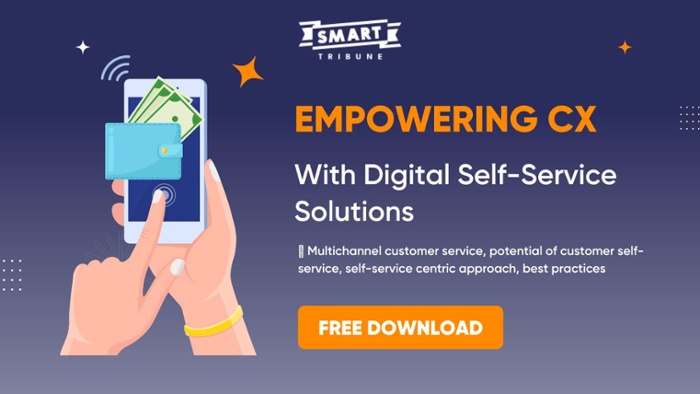
What is A Customer Engagement Tool?
A customer engagement tool (CET) is a software or platform designed to facilitate and enhance interactions between businesses and their customers. It enables businesses to engage with customers across various channels, such as websites, social media, email, and mobile applications.
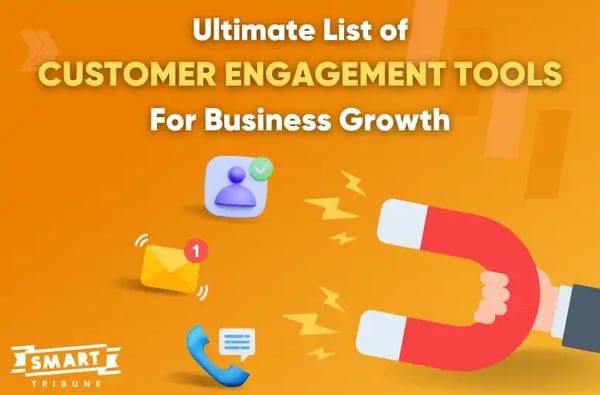
The primary purpose of a customer engagement tool is to foster meaningful and personalised interactions, ultimately building stronger relationships and increasing customer satisfaction.
How to Choose the Right Customer Engagement Tools for Your Business?
Opting for the right technology not only trims your expenses but also boosts efficiency, that said, selecting a suitable set of customer engagement solutions isn't a walk in the park. You're supposed to analyze both your business's demands and the customer engagement platforms.
Understanding your headache, Smart Tribune is listing out 10 steps you must go through to choose the best-suited customer engagement tools.
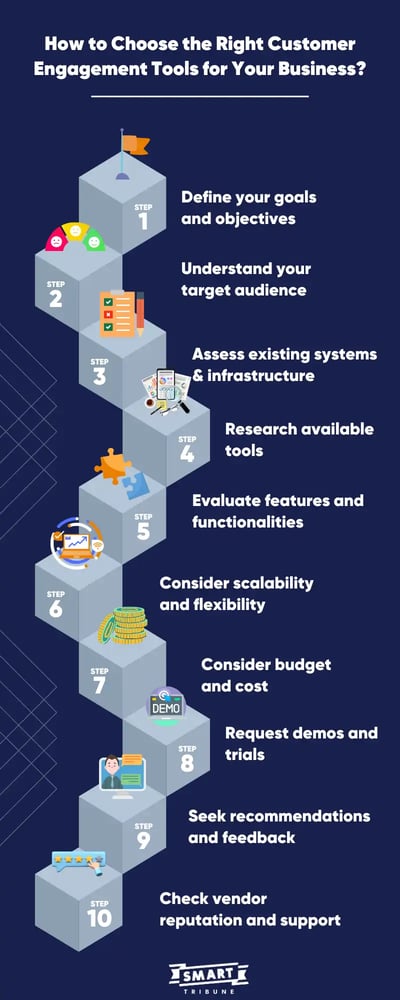
Define your goals and objectives
Clearly identify your business goals and objectives related to customer engagement. Determine what outcomes you want to achieve, such as increasing customer satisfaction, improving retention rates, or enhancing personalised experiences. Having a clear understanding of your goals will help you choose tools that align with your specific needs.
Understand your target audience
Gain insights into your target audience's preferences, behaviours, and communication channels. Identify how they prefer to engage with businesses and what channels they use the most, such as email, social media, or live chat. This understanding will guide you in selecting tools that align with your customers' communication preferences.
Assess your existing systems and infrastructure
Evaluate your current technology infrastructure and systems. Determine what tools you already have in place and assess their effectiveness. Consider whether your existing systems can integrate with new customer engagement tools, as integration capabilities can streamline operations and improve efficiency.
Research available tools
Conduct thorough research on the different customer engagement tools available in the market. Look for tools that offer features and functionalities aligned with your goals and target audience. Consider factors such as ease of use, scalability, compatibility with your existing systems, and customer reviews or testimonials.
Evaluate features and functionalities
Determine which features and functionalities are essential for your business. Some common features include live chat capabilities, customer support ticketing systems, email marketing automation, social media management, personalisation options, analytics and reporting, and integration capabilities. Prioritize features that align with your goals and will have the most significant impact on your customer engagement efforts.
Consider scalability and flexibility
Choose tools that can scale with your business as it grows. Consider the flexibility of the tools to adapt to changing customer needs and evolving market trends. Ensure that the tools you select can accommodate future expansion and integrate with other systems or tools that you may adopt in the future.
Consider budget and cost
Evaluate the costs associated with the customer engagement tools, including licensing fees, implementation costs, and ongoing maintenance or subscription fees. Consider the return on investment (ROI) and the potential value the tools will bring to your business. Balance the costs with the expected benefits to determine the most cost-effective options.
Request demos and trials
Request demos or trials from the shortlisted tools to gain hands-on experience and evaluate their usability and effectiveness. Test the tools with real-life scenarios to assess their functionality, user interface, and overall user experience. This step will help you make an informed decision based on practical insights.
Seek recommendations and feedback
Reach out to industry peers, colleagues, or professional networks to gather recommendations and insights. Consider their experiences with similar tools and gather feedback on their effectiveness and performance. This can help validate your choices and provide additional perspectives.
Check vendor reputation and support
Research the reputation and credibility of the tool vendors. Look for customer reviews, case studies, or testimonials to assess their track record and customer satisfaction levels. Additionally, evaluate the quality of vendor support and the availability of training resources or documentation to ensure smooth implementation and ongoing assistance.
Delving deep into customer profiles is also a brilliant idea. For instance, serving more than 150 juggernauts worldwide, Smart Tribune is regarded as the top vendor for customer self-service.
By following these steps, you can choose customer engagement tools that align with your business objectives, cater to your target audience's needs, and supply the necessary features and functionalities to enhance your customer engagement efforts.
Key Features of Effective Customer Engagement Tools
Customer engagement tools ooze with a range of features and functionalities to support different aspects of customer interaction. Some common features include:
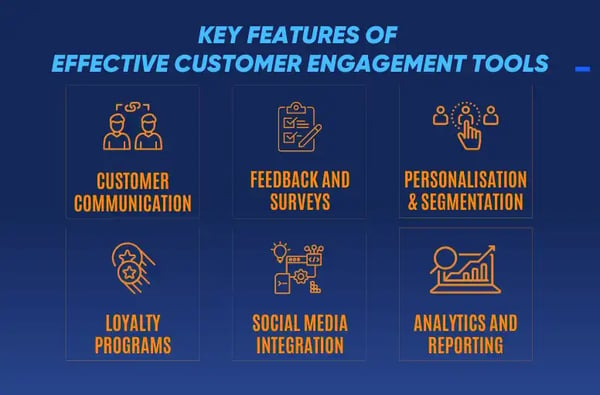
- Customer communication: These tools provide channels for two-way communication, allowing businesses to interact with customers through live chat, messaging apps, or chatbots. They enable businesses to respond to customer queries, provide support, and offer personalised recommendations or suggestions.
- Customer feedback and surveys: Customer engagement tools often include features for collecting feedback and conducting surveys. These tools help businesses gather insights into customer preferences, opinions, and satisfaction levels, enabling them to make data-driven decisions and improve their products or services.
- Personalisation and segmentation: These tools offer capabilities to segment customers based on various criteria, such as demographics, behavior, or purchase history. By leveraging customer data, businesses can deliver personalised experiences, targeted marketing campaigns, and relevant content tailored to specific customer segments.
- Loyalty programs and rewards: Customer engagement tools may incorporate loyalty program management features. These enable businesses to create and manage loyalty programs, reward customer behavior, and offer incentives to encourage repeat purchases and brand loyalty.
- Social media integration: Tons of customer engagement tools integrate with social media platforms, allowing businesses to monitor and engage with customers on social channels. These tools provide features for social listening, scheduling and publishing posts, and analyzing social media metrics to understand customer sentiment and improve social media engagement strategies.
- Analytics and reporting: Customer engagement tools often provide data analytics and reporting functionalities. They allow businesses to track customer interactions, measure engagement metrics, and gain insights into the effectiveness of their engagement strategies. These insights can inform future decision-making and help optimize customer engagement efforts.
Overall, customer engagement tools should be designed to empower businesses to communicate effectively, personalize interactions, and gain valuable insights into customer preferences and behaviors.
Top 5 Recommended Customer Engagement Tools to Boost CX
Here comes the best part of the blog post. Let's sort out some top-notch customer engagement tools that you can consider for your business:
Smart Tribune - Exceed customer expectations with smart customer self-service
Smart Tribune is a groundbreaking customer engagement platform that offers knowledge base management, self-service portals and chatbots.
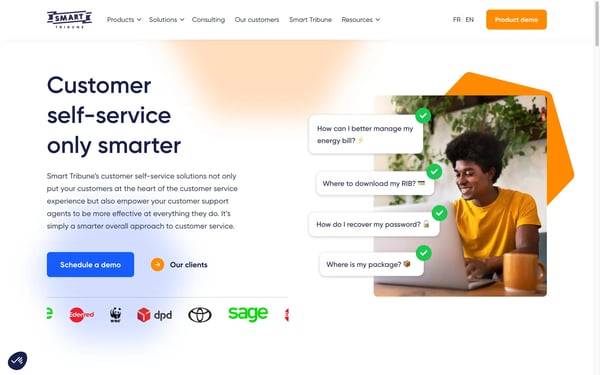
We empower businesses to yield personalised and efficient customer support, deliver relevant knowledge articles, and immediately respond to any customers' queries.
- Pricing: Custom solution.
Let's contact Smart Tribune for a demo to deliver unrivaled customer support and see how we do wonders for your business.
HubSpot - Manage customer info, content, emails and customer feedback with ease
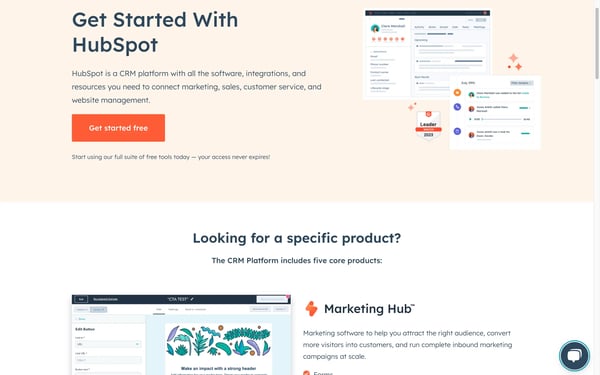
HubSpot provides a suite of customer engagement tools that include CRM, marketing automation, live chat, email marketing, and customer feedback management. It offers features for lead nurturing, personalisation, customer journey tracking, and analytics.
- Pricing: Free - $5000/month
Mailchimp - Turn emails into revenue
Mailchimp is a renowned email marketing and marketing automation platform. It provides businesses and individuals with the tools to create, manage, and send email campaigns to their subscribers.
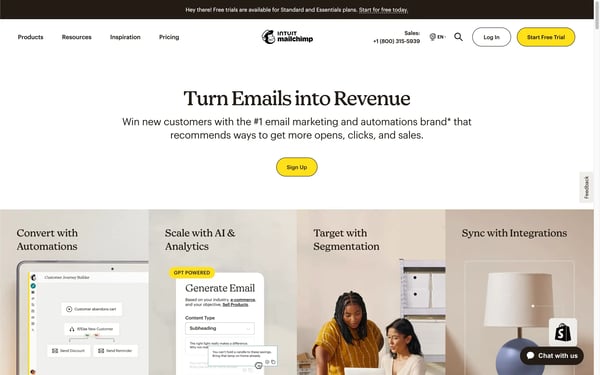
With Mailchimp, users can design visually appealing email templates, segment their audience, schedule email campaigns, and track the performance of their email marketing efforts.
- Pricing: Free - $350/month
Typeform - Make data collection fun for everyone
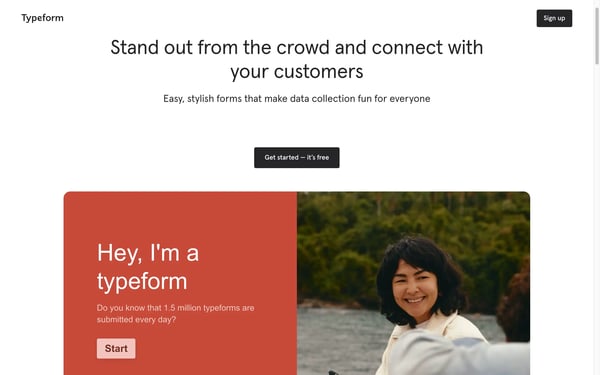
Typeform is an online form and survey tool that allows users to create interactive and engaging forms, surveys, quizzes, and other types of data collection instruments. It was founded in 2012 with the aim of providing a user-friendly and conversational approach to form building and data collection.
- Pricing: $25 - $83/month
Hootsuite - Put social media to work for your business
Hootsuite is a social media management platform that allows individuals and businesses to streamline their social media activities.
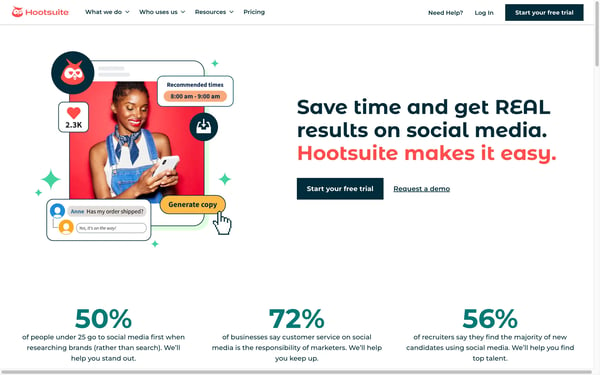
This customer engagement platform provides tools for scheduling and publishing content, monitoring social media conversations, engaging with audiences, and analyzing social media performance.
- Pricing: $99/month - Enterprise custom
Keep in mind to evaluate each tool based on your business's specific requirements, budget, and integration capabilities with your existing systems. It's also recommended to request demos or trials to assess how well the tools align with your business needs before making a final decision.
Why Should Businesses Use CETs?
Evolving constantly and affecting tremendously customer expectations in shopping and choosing services, technology is redefining the purchasing experience. While buyers, in B2B and B2C markets, online and offline, expect to solve their problems ASAP, customer engagement software can provide quick responses with the highest accuracy and satisfy them in a flash.
Though we can easily figure out the speed and precision of the customer engagement solutions offer, it's just the tip of the iceberg. Businesses also take advantage of customer engagement apps for several compelling reasons. Let's check it out!
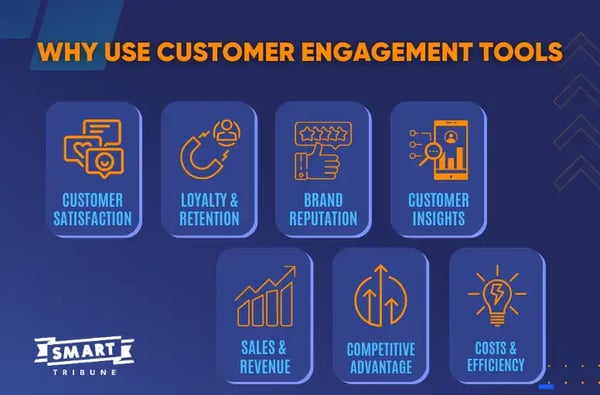
Customer satisfaction improvement
User engagement tools give businesses an upper hand in
- Delivering personalised and timely interactions,
- Addressing customer queries and concerns promptly,
- Providing proactive support.
By enhancing the customer experience, businesses can boost customer satisfaction levels and nurture stronger relationships with them.
Customer loyalty and retention upswing
Needless to say, effective customer engagement leads to increased customer loyalty. By utilizing customer engagement tools to deliver personalised experiences, rewards, and targeted marketing campaigns, you can foster a sense of loyalty and encourage customers to choose your brand over competitors.
Research from Acquia reveals that 59% of US shoppers state that once they’re loyal to a brand, they’re loyal to it for life. That's why earning customer loyalty is of paramount importance to business growth.
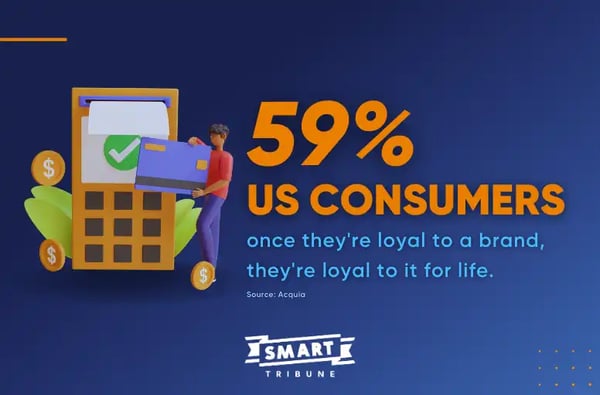
Obviously, engaged and loyal customers are more likely to make repeat purchases, recommend the business to others, and contribute to long-term revenue growth.
Brand reputation enhancement
When businesses actively engage with customers and provide exceptional customer experiences, it positively impacts their brand reputation.
Microsoft shows that over half of global consumers consider customer service as a “very important” factor in brand choice and loyalty.
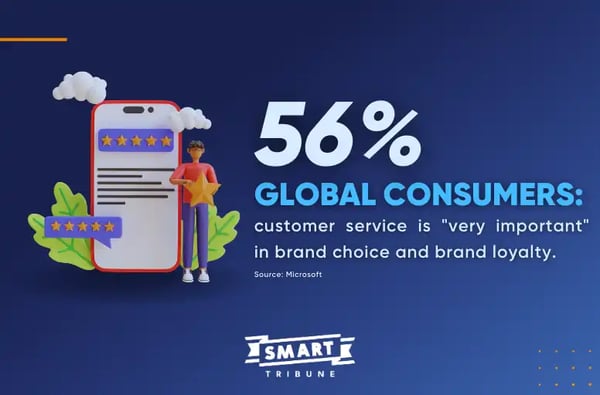
Satisfied customers are more likely to share positive feedback, leave positive reviews, and endorse the business through word-of-mouth or social media. This serves as a magnet for new customers and improves the overall perception of the brand.
Better customer insights attainment
Customer engagement tools integrated with data discovery tools often provide data and analytics capabilities that allow businesses to gain valuable insights into customer preferences, behaviors, and needs. By collecting and analyzing customer data, businesses can make informed decisions, tailor their offerings, and map out effective marketing strategies to better meet customer expectations.
Increased sales and revenue
An effective digital engagement platform can be your silver bullet for skyrocketing sales and revenue. By showing personalised recommendations and relevant offers before customers' eyeballs, businesses can urge customers to make additional purchases or explore new products and services. Additionally, engaged customers are more likely to become brand advocates, actively promoting the business and influencing others to become customers.
Discover What is Customer Advocacy? Definition, Benefits, Strategy and Evaluation.
Competitive advantage
Harnessing client engagement platforms can give businesses a competitive edge. By proactively engaging with customers, offering exceptional experiences, and leveraging data-driven insights, businesses can differentiate themselves from competitors. This can help attract new customers, retain existing ones, and position the business as a leader in its industry.
If positioning sounds unfamiliar to you, check out Guide to Ace Positioning Statement and 5 Steps to Write Your Positioning Statement.
Cost savings and efficiency
Customer engagement tools automate and streamline various customer interactions, reducing the need for manual intervention and improving operational efficiency.
Automated processes, such as chatbots or self-service options, can handle repeated inquiries and free up human resources for more complex tasks. This automation or AI-powered technology can result in cost savings and resource allocation optimisation within the business.
Doubtlessly, customer engagement tools offer numerous merits to businesses that can assist you to stay ahead in today's competitive marketplace.
Discover chatbot use cases that you need to know in 2023.
When to Use Customer Engagement Management Software?
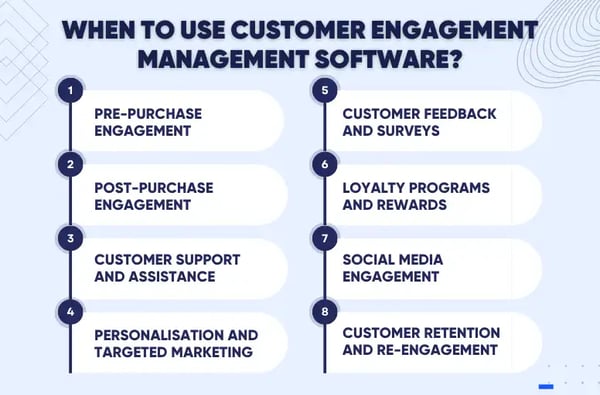
Customer engagement tools can be utilized in various situations and stages of the customer journey. Here are some scenarios when businesses should consider using customer engagement tools:
1. Pre-purchase engagement: Use customer engagement tools to interact with potential customers and provide them with information, support, and personalised recommendations. This can help guide them through the decision-making process, address their concerns, and build trust in your brand.
2. Post-purchase engagement: Customer engagement tools are valuable for nurturing customer relationships after a purchase. Send order confirmations, shipping updates, and post-purchase follow-ups to ensure customers feel supported and informed. Offer proactive customer service and gather feedback to gauge satisfaction levels and address any issues promptly.
3. Customer support and assistance: Implement customer engagement tools such as live chat, chatbots, or CRM ticketing systems to provide real-time assistance to customers. These tools can help resolve inquiries, provide product information, troubleshoot issues, and offer guidance, enhancing the overall customer experience.
4. Personalisation and targeted marketing: Leverage customer engagement tools to cater personalised experiences and targeted marketing campaigns. Use customer data and segmentation features to tailor content, offers, and recommendations based on individual preferences, purchase history, or demographics. This approach can increase engagement and conversion rates.
5. Customer feedback and surveys: Utilize customer engagement tools to gather feedback and conduct surveys to understand customer satisfaction, preferences, and expectations. This data can guide product development, service improvements, and overall business strategy.
6. Loyalty programs and rewards: Implement customer engagement tools to manage loyalty programs and reward customer behavior. Offer incentives, exclusive discounts, or personalised rewards to encourage repeat purchases, brand advocacy, and customer loyalty.
7. Social media engagement: Use customer engagement tools to manage social media interactions, monitor brand mentions, and engage with customers on social platforms. Respond to comments, address inquiries, and participate in conversations to foster a positive brand image and build relationships with your social media audience.
8. Customer retention and re-engagement: Employ customer engagement tools to re-engage inactive or lapsed customers. Target them with personalised offers, reminders, or relevant content to encourage their return and reignite their interest in your products or services. To further re-engage customers, use QR codes in personalized outreach, directing them to product pages or demos. Integrate QR codes effortlessly with a reliable QR code generator, showcasing a commitment to rebuilding relationships and fostering loyalty.
It's important to note that the specific tools and strategies employed will vary depending on the business, industry, and target audience. Understanding your customers' needs, preferences, and journey stages will help determine the most effective timing and approach for exploiting customer engagement tools.
Dig into the buyer journey map to look for the gap that needs customer engagement tools.
FAQs about Customer Engagement Software
What is user engagement? or What does customer engagement mean?
User engagement refers to the level of interaction, involvement, and emotional connection that users have with a product, service, or platform.
What is a customer engagement platform?
A customer engagement platform is a software solution that helps businesses interact, communicate, and build relationships with their customers across various channels and touchpoints.
What is digital engagement?
Digital engagement is the process of interacting, connecting, and building relationships with audiences through digital channels, such as websites, social media, email, and mobile applications.
How to improve customer engagement through technology?
To improve customer engagement through technology, businesses can leverage personalised messaging, targeted content, interactive experiences, and seamless omnichannel interactions to create meaningful and convenient interactions with customers.
Bottom Line - Opt for the Right Online Engagement Tool to Retain Customers
That's all about customer engagement tools. We hope that after reading this article, you can select the best-suited tools to accelerate your business growth. Should you have any questions regarding customer engagement software, drop Smart Tribune a line for further assistance. Happy reading!
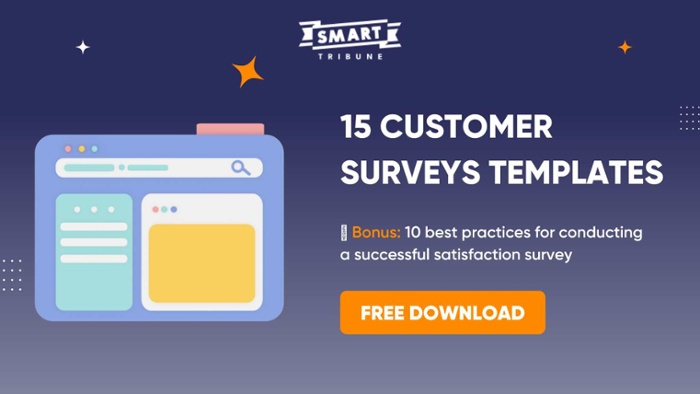
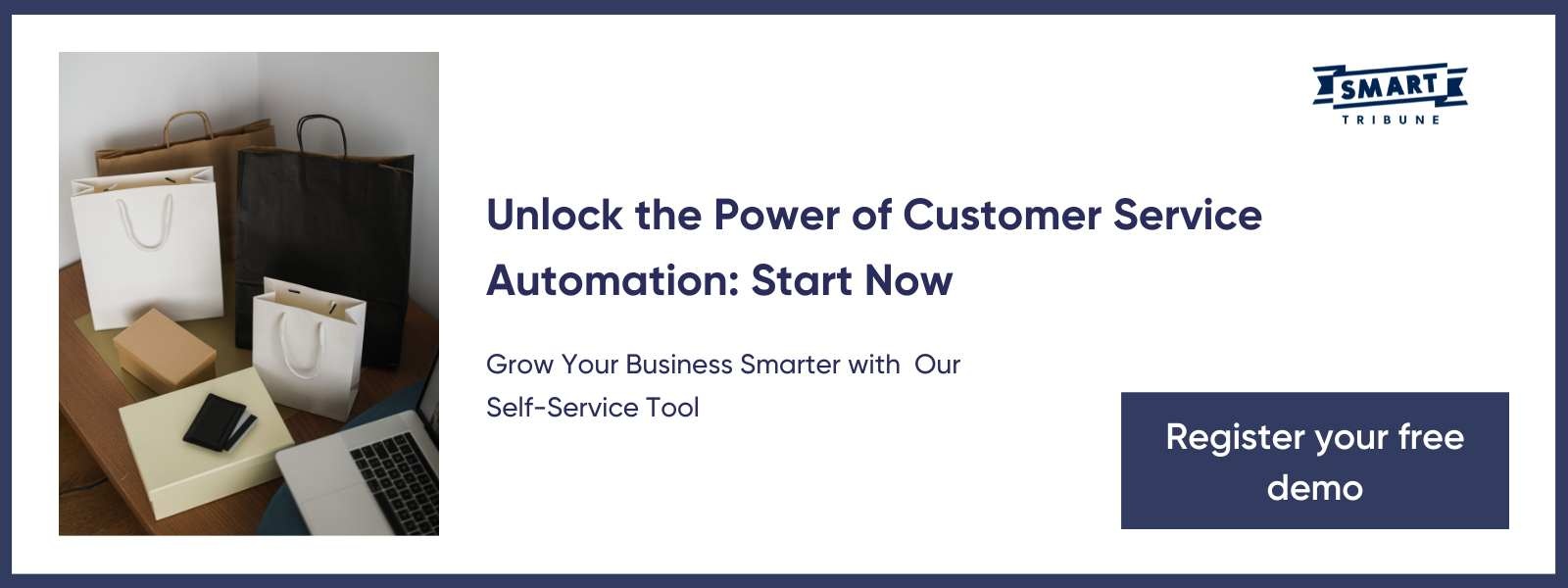

.png)



